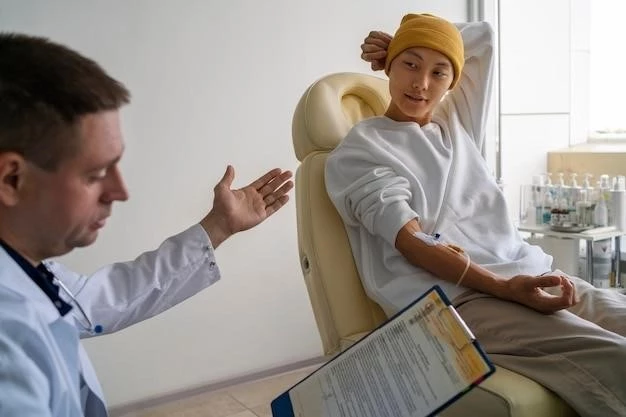Overview of Acrodysostosis
Causes of Acrodysostosis
Common Symptoms Associated with Acrodysostosis
Overview of Acrodysostosis
Acrodysostosis is a rare genetic disorder characterized by abnormal bone development and skeletal abnormalities. It primarily affects the bones in the hands, feet, and face, leading to short stature and distinctive facial features. Due to its rarity, acrodysostosis often poses diagnostic challenges for healthcare providers.
Individuals with acrodysostosis may experience delayed development, dental issues, and hormonal imbalances. Management typically involves a multidisciplinary approach to address the diverse symptoms associated with the condition. Understanding the complexities of acrodysostosis is crucial for providing comprehensive care and support to affected individuals.
Causes of Acrodysostosis
Acrodysostosis is primarily caused by mutations in the PRKAR1A gene, affecting the signaling pathway responsible for bone growth and development. These genetic mutations result in alterations to the way cells respond to certain hormones, leading to the characteristic skeletal abnormalities seen in acrodysostosis. In some cases, the condition may also occur sporadically without a family history of the disorder.
Understanding the genetic basis of acrodysostosis is crucial for accurate diagnosis and genetic counseling. Research continues to explore the molecular mechanisms underlying the condition, providing insights into potential therapeutic targets for improved management strategies.
Common Symptoms Associated with Acrodysostosis
Common symptoms of acrodysostosis include short stature, small hands and feet, skeletal abnormalities, brachydactyly, and distinctive facial features such as a flattened nasal bridge and underdeveloped midface. Individuals with acrodysostosis may also experience intellectual disability, hearing loss, and hormonal imbalances affecting growth and development.
Other symptoms can involve dental issues, joint stiffness, and skin abnormalities. A comprehensive understanding of the range of symptoms associated with acrodysostosis is essential for early detection, appropriate management, and supportive care tailored to the individual needs of patients with this rare genetic disorder.
Medical Interventions for Acrodysostosis
Surgical Treatments Available
Therapies and Management Strategies
Medical Interventions for Acrodysostosis
Medical interventions for acrodysostosis focus on managing the various symptoms associated with the condition. This may involve hormone replacement therapy to address hormonal imbalances, physical therapy to improve mobility and joint function, and regular monitoring of growth and development.
Additionally, individuals with acrodysostosis may benefit from multidisciplinary care involving endocrinologists, orthopedic specialists, genetic counselors, and other healthcare professionals to provide comprehensive and personalized treatment plans. Ongoing research aims to further enhance medical interventions and improve the quality of life for individuals living with acrodysostosis.
Surgical Treatments Available
Surgical treatments for acrodysostosis may be necessary to address specific skeletal abnormalities, such as hand or foot deformities, that impact function and mobility. Procedures like corrective osteotomies, bone grafting, or joint fusions can be performed to improve skeletal alignment and function.
Orthopedic surgeons specializing in complex bone disorders play a crucial role in evaluating and planning surgical interventions tailored to the individual needs of patients with acrodysostosis. Close collaboration between surgical teams and other healthcare providers is essential to optimize outcomes and enhance the overall quality of care for individuals with this rare genetic condition.
Therapies and Management Strategies
Therapies for acrodysostosis focus on addressing the diverse symptoms and complications associated with the condition. This may include physical therapy to improve mobility, speech therapy for communication challenges, and educational support for developmental delays.
Furthermore, a multidisciplinary approach involving healthcare professionals from various specialties is crucial for comprehensive management. Individualized care plans tailored to the unique needs of each patient can help optimize outcomes and enhance the quality of life for individuals living with acrodysostosis.
Diagnostic Procedures for Acrodysostosis
Prognosis and Long-Term Outlook
Diagnostic Procedures for Acrodysostosis
Diagnosing acrodysostosis typically involves a thorough clinical evaluation, genetic testing to identify mutations in the PRKAR1A gene, and imaging studies such as X-rays and bone scans to assess skeletal abnormalities. Additionally, hormonal assessments may be conducted to evaluate endocrine function and guide treatment decisions.
A multidisciplinary approach involving geneticists, endocrinologists, orthopedic specialists, and other healthcare providers is essential for an accurate diagnosis of acrodysostosis. Early and precise diagnosis plays a critical role in developing personalized care plans and interventions to improve long-term outcomes for individuals affected by this rare genetic disorder.
Prognosis and Long-Term Outlook
The prognosis for individuals with acrodysostosis varies depending on the severity of symptoms and the effectiveness of management strategies. While the condition is chronic, timely interventions and comprehensive care can help improve quality of life and functional outcomes.
Long-term outlooks for patients with acrodysostosis focus on addressing specific needs such as growth monitoring, orthopedic interventions, and educational support. Close monitoring by a multidisciplinary healthcare team is essential to adapt treatment strategies over time and provide ongoing support for individuals with acrodysostosis.
Impact of Acrodysostosis on Childhood Development
Special Considerations for Pediatric Patients
Impact of Acrodysostosis on Childhood Development
Acrodysostosis can significantly impact childhood development due to its effects on bone growth, hormonal balance, and overall physical health. Children with acrodysostosis may experience delays in growth, motor skills, and cognitive development.
Early intervention and comprehensive care that address the specific needs of pediatric patients are essential in promoting optimal development and improving long-term outcomes. Monitoring growth parameters, providing educational support, and addressing any associated complications promptly can help enhance the overall well-being of children affected by acrodysostosis.
Special Considerations for Pediatric Patients
Special considerations for pediatric patients with acrodysostosis revolve around the need for early detection, multidisciplinary care, and tailored interventions to support their growth and development. Close monitoring of bone health, growth patterns, and hormonal balance is crucial for optimizing outcomes.
Healthcare providers specializing in pediatric bone disorders play a key role in managing the unique challenges faced by children with acrodysostosis. Collaborative efforts involving specialists in endocrinology, orthopedics, and developmental pediatrics can help ensure holistic care and improved quality of life for pediatric patients with this rare genetic condition.
Position of Acrodysostosis Among Rare Genetic Disorders
Genetic Factors Contributing to Acrodysostosis
Position of Acrodysostosis Among Rare Genetic Disorders
Acrodysostosis is recognized as a rare genetic disorder that affects bone development and growth. With its distinct skeletal abnormalities and characteristic features, acrodysostosis stands out among other rare genetic conditions for its impact on physical and developmental health.
Although considered rare, increased awareness and advances in genetic testing have enhanced the identification and understanding of acrodysostosis. Research into the underlying genetic mechanisms continues to shed light on this unique disorder and its position within the spectrum of rare genetic disorders affecting skeletal health.
Genetic Factors Contributing to Acrodysostosis
Acrodysostosis is primarily caused by mutations in the PRKAR1A gene, which plays a crucial role in regulating cellular responses to hormones involved in bone development. These genetic alterations disrupt normal signaling pathways, leading to the characteristic skeletal abnormalities and growth impairments seen in acrodysostosis.
Understanding the genetic factors contributing to acrodysostosis is essential for accurate diagnosis, genetic counseling, and the development of targeted treatment approaches. Ongoing research focused on unraveling the molecular mechanisms underlying these genetic mutations holds promise for advancing therapeutic interventions and improving outcomes for individuals affected by acrodysostosis.
Distinguishing Features of Acrodysostosis
Key Differences from Other Bone Disorders
Distinguishing Features of Acrodysostosis
Acrodysostosis is characterized by distinctive features such as short stature, small hands and feet (brachydactyly), and facial abnormalities including a flattened nasal bridge. Individuals with acrodysostosis may also exhibit intellectual disability, hormonal imbalances, and skeletal issues.
These distinguishing features set acrodysostosis apart from other bone disorders and contribute to the unique clinical presentation of the condition. Recognizing these characteristic traits is essential for accurate diagnosis and tailored management strategies for individuals affected by acrodysostosis.
Key Differences from Other Bone Disorders
Acrodysostosis differs from other bone disorders in its distinct clinical features, including short stature, brachydactyly, and facial abnormalities. Unlike some bone disorders primarily affecting bone density or structure, acrodysostosis predominantly impacts bone development and growth.
Moreover, the genetic basis of acrodysostosis involving mutations in the PRKAR1A gene sets it apart from other bone disorders with different underlying genetic causes. Understanding these key differences is crucial for accurate diagnosis, targeted treatment approaches, and appropriate management of individuals with acrodysostosis compared to those with other bone disorders.
Addressing Musculoskeletal Challenges
Monitoring and Treating Associated Conditions

